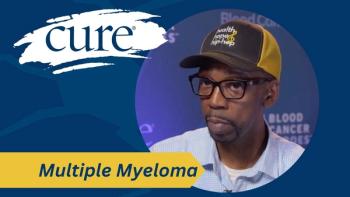TORL-1-23, a CLDN6–targeted antibody-drug conjugate (ADC), generated responses and was well tolerated in heavily pretreated, CLDN6-positive advanced solid tumors, including platinum-resistant ovarian cancer, according to data from the phase 1 TORL-123-001 trial, presented at the 2024 ESMO Congress.
According to the National Cancer Institute, an ADC is a substance consisting of a monoclonal antibody that binds to specific proteins or receptors within cancer cells, which enter the cell to kill it without harming other cells.
- TORL-1-23 demonstrated promising efficacy in heavily pretreated patients with CLDN6-positive advanced solid tumors, including platinum-resistant ovarian cancer.
- The antibody-drug conjugate was well tolerated with a favorable safety profile, and the maximum-tolerated dose had not yet been reached.
- Responses observed with TORL-1-23 were durable, suggesting the potential for long-lasting benefits.
- TORL-1-23's targeting of CLDN6, a protein overexpressed in various cancers, represents a targeted approach to cancer treatment.
Findings showed that among all efficacy-evaluable patients, 19 patients treated with TORL-1-23 at doses of less than 2.4 milligrams (mg) per kilogram (kg), the overall response rate (ORR; the percentage of patients with a positive response to treatment) was 26%, which exclusively comprised partial responses (PRs; a decrease in tumor size or the extent of cancer in the body); 42% of patients had stable disease (SD; cancer that is neither increasing nor decreasing in severity or extent) and 32% of patients had progressive disease (PD; cancer that spreads, grows or worsens). At a dose of 2.4 mg/kg (19 patients), the ORR was 42% with all responders achieving a PR; the rates of SD and PD were 47% and 11%, respectively. At a dose of 3 mg/kg (26 patients), the ORR was 31%, including a complete response (the disappearance of all signs of cancer from treatment) rate of 4% and a PR rate of 27%; the respective SD and PD rates were 46% and 23%.
In patients with CLDN6-positive platinum-resistant ovarian cancer, the ORRs were 30% at doses less than 2.4 mg/kg, 50% (4 out of 8 patients) at the 2.4 mg/kg dose, and 42% (5 out of 12 patients) at the 3 mg/kg dose.
Lead study author Dr. Gottfried E. Konecny said the ADC was well tolerated with a favorable safety profile. The risk of neutropenia (lower than normal levels of neutrophils, a type of white blood cell) was mitigated by prophylactic pegfilgrastim (a medication used to prevent neutropenia), and the maximum-tolerated dose (MTD) of TORL-1-23 had not yet been reached.
“The promising activity was confirmed as being durable and deep. … [There were encouraging data for] all patients treated in dose escalation, particularly in [patients with] ovarian cancer treated at 2.4 mg/kg and 3 mg/kg,” Konecny said during a presentation of the data. He is the lead clinician for gynecologic oncology in the Department of Medicine at the University of California, Los Angeles.
CLDN6 is expressed at high levels in a variety of cancers and has little to no expression in normal tissues, Konecny explained during the presentation.
TORL-123-001 Design and Enrollment
The phase 1, first-in-human study enrolled patients at least 18 years of age with advanced solid tumors who had measurable disease, an ECOG performance status of 0 or 1 (fully active or limited strenuous activity) and adequate organ function.
TORL-1-23 is being evaluated at 11 different dose levels ranging from 0.2 mg/kg to 3.6 mg/kg. At dose level 9 (3 mg/kg), dose level 10 (4.0 mg/kg), and dose level 11 (3.6 mg/kg), prophylactic pegfilgrastim is also being administered at a dose of at least 3 mg/kg.
The dose-expansion portion of the study includes patients with CLDN6-positive platinum-resistant ovarian cancer, CLDN6-positive refractory non-small cell lung cancer (NSCLC), other CLDN6-positive refractory cancers, and CLDN6-low refractory cancers. Within each of those groups, approximately 10 to 20 patients are being treated at both 2.4 mg/kg and 3 mg/kg.
The primary objectives of the study are safety, tolerability, dose-limiting toxicities and determining the MTD and recommended phase 2 dose.
Among patients enrolled in the dose-escalation portion of the study (51 patients), the median age was 61 years. Tumor types included ovarian (36 patients), testicular (4 patients), endometrial (7 patients), NSCLC (2 patients) and other (2 patients). This patient population received a median of four prior lines of therapy. Thirty-eight patients had CLDN6-positive disease per immunohistochemistry (IHC).
In dose expansion (30 patients), the median age was 65 years. Tumor types included ovarian (14 patients), testicular (1 patient), endometrial (6 patients), NSCLC (6 patients) and other (3 patients). Patients received a median of three prior lines of therapy. Twenty-seven patients had CLDN6-positive disease per IHC.
Additional Efficacy and Safety Data
In patients with platinum-resistant ovarian cancer, the median duration of response was approximately 22 weeks for those treated with the 2.4-mg/kg dose and approximately 30 weeks for those treated at the 3-mg/kg dose in combination with prophylactic pegfilgrastim.
Safety data from dose expansion showed that at the 2.4-mg/kg dose (16 patients), the most common side effects included anemia (any severity, 25%; severe or worse, 0%), neutropenia (31%; 19%), nausea (67%; 0%), constipation (6%; 0%), diarrhea (25%; 6%), vomiting (25%; 0%), fatigue (56%; 19%), arthralgia (joint pain or soreness; 31%; 0%), myalgia (muscle pain; 19%; 6%), neuropathy (nerve damage; 25%; 0%) and alopecia (hair loss; 56%; 0%).
At the 3.0-mg/kg dose (14 patients), the most frequent side effects consisted of anemia (any severity, 29%; grade ≥3, 0%), neutropenia (7%; 7%), nausea (64%; 0%), constipation (29%; 0%), diarrhea (21%; 0%), vomiting (21%; 0%), fatigue (79%; 14%), arthralgia (43%; 0%), myalgia (21%; 0%), neuropathy (57%; 0%) and alopecia (69%; 0%).
“There is a registrational phase 2 study being initiated globally in CLDN6-positive platinum-resistant [ovarian cancer], and the molecule is under further evaluation in other CLDN6-positive cancers, including NSCLC,” Konecny concluded.
For more news on cancer updates, research and education, don’t forget to subscribe to CURE®’s newsletters here.





